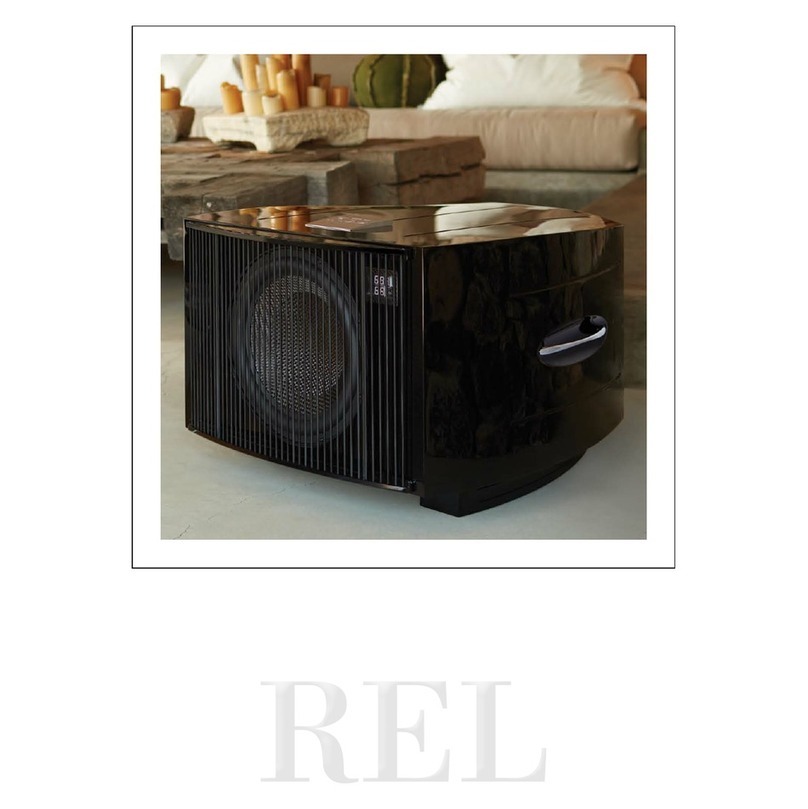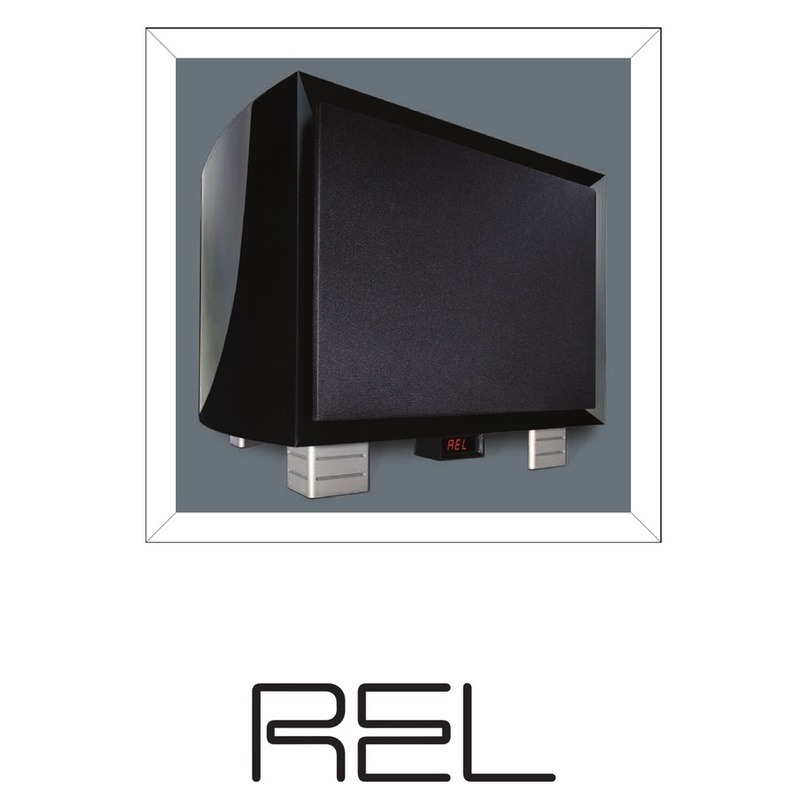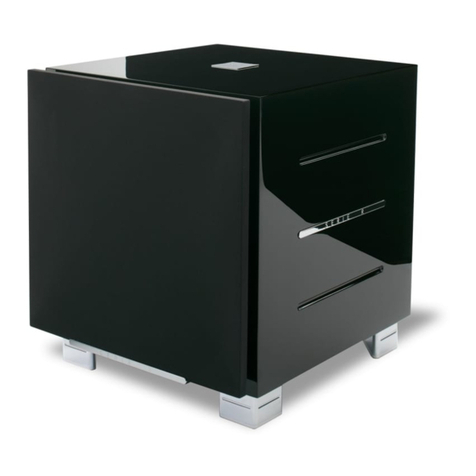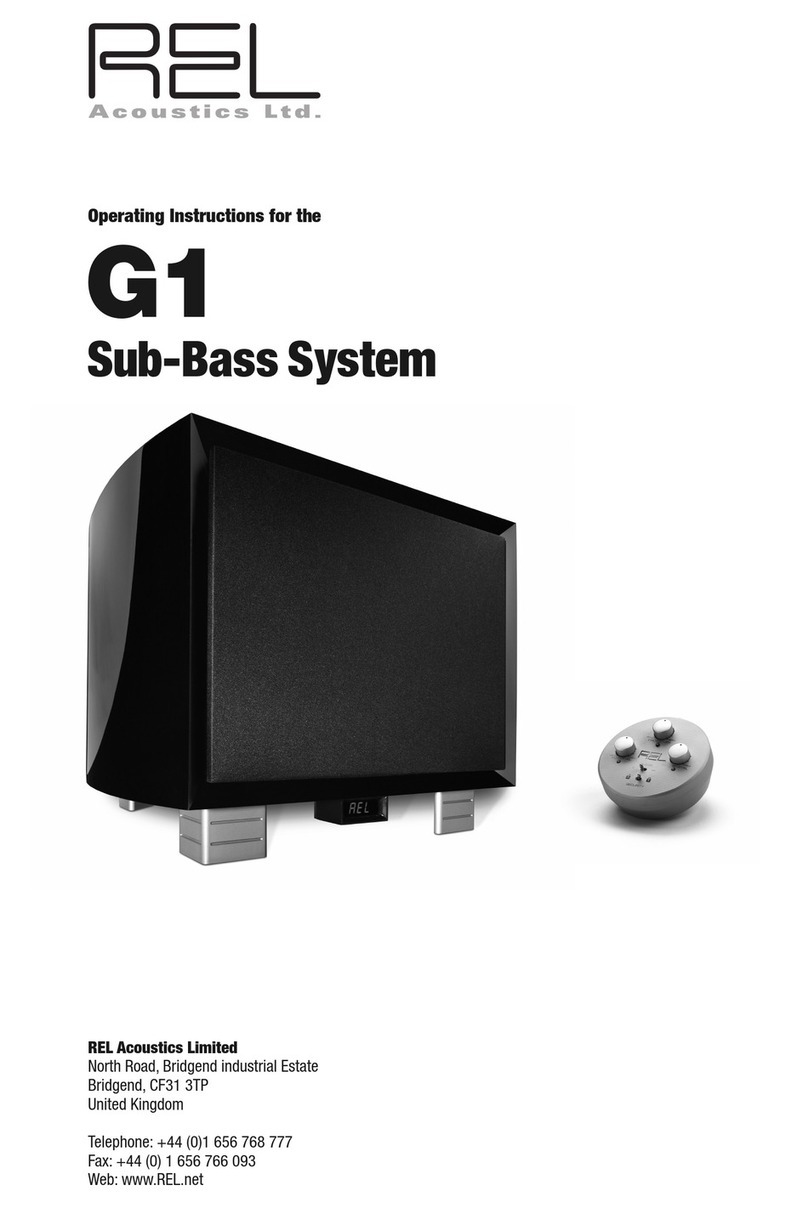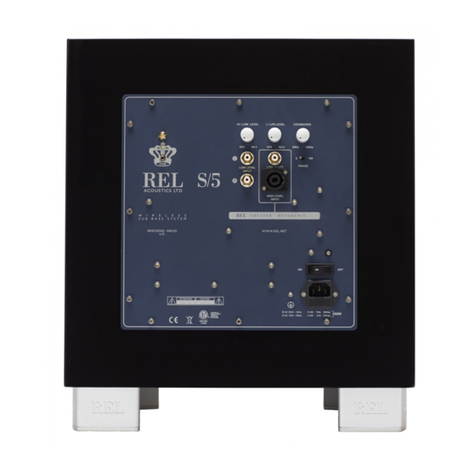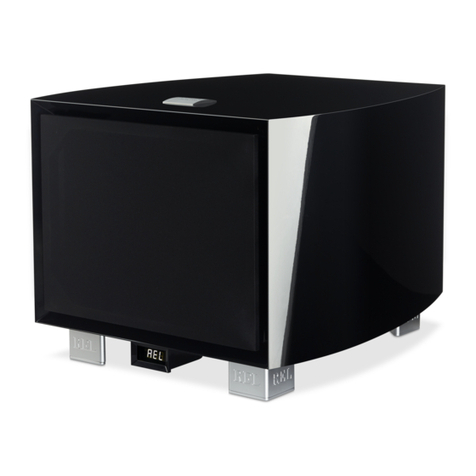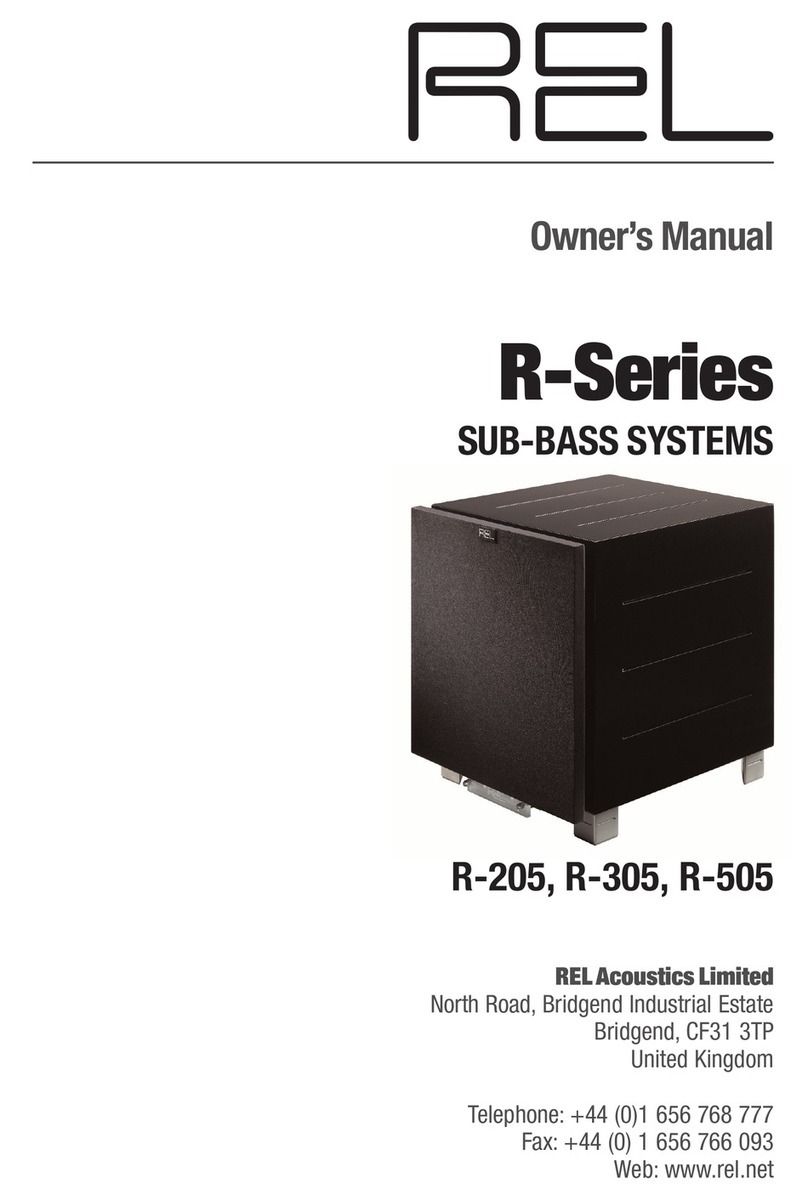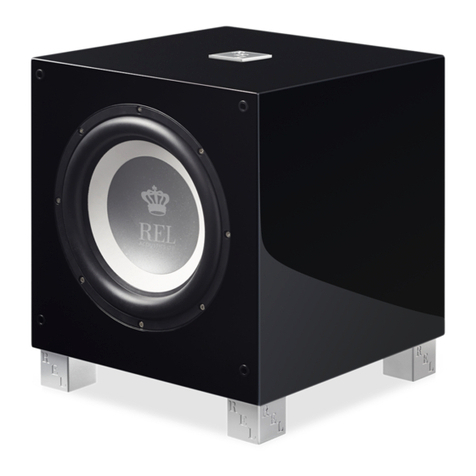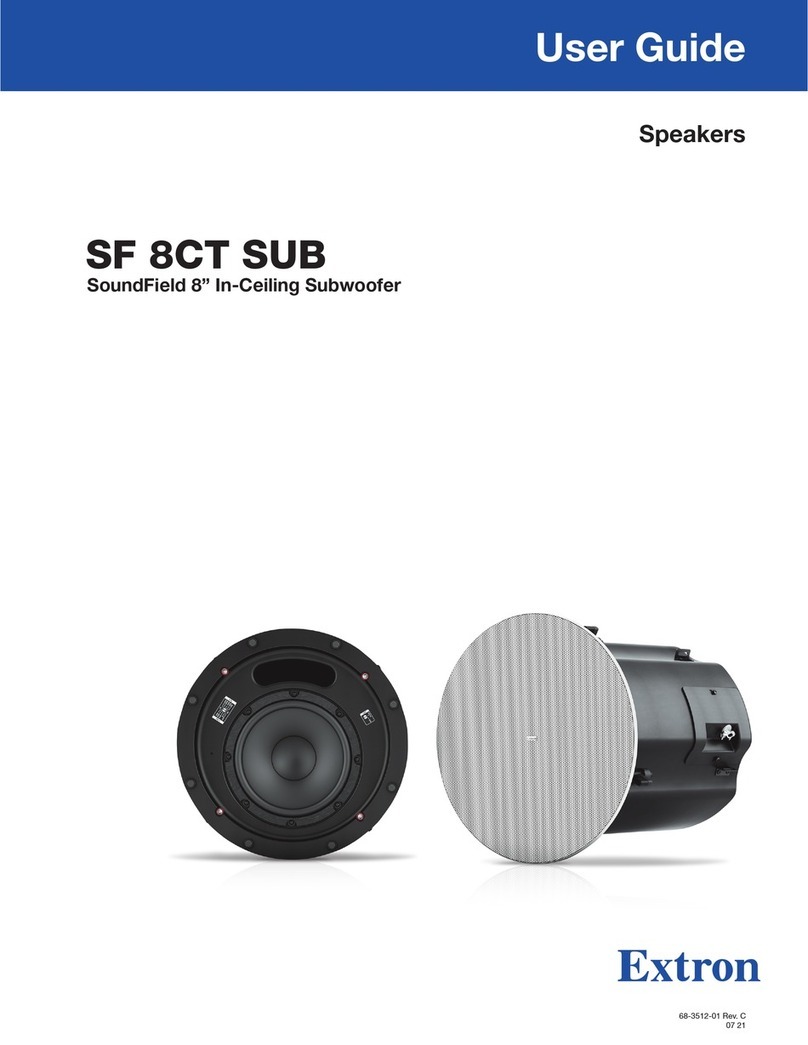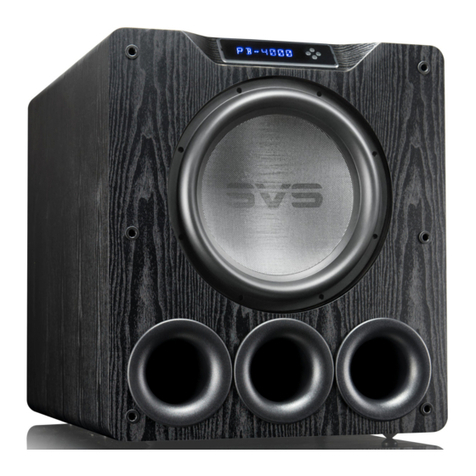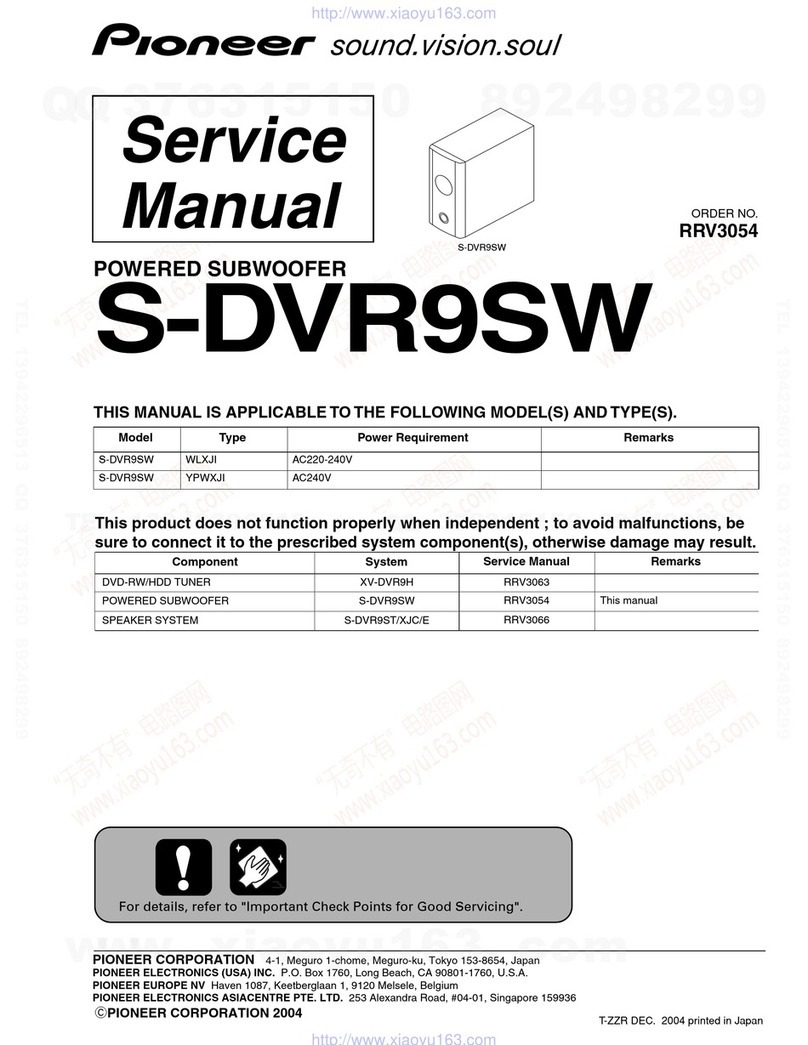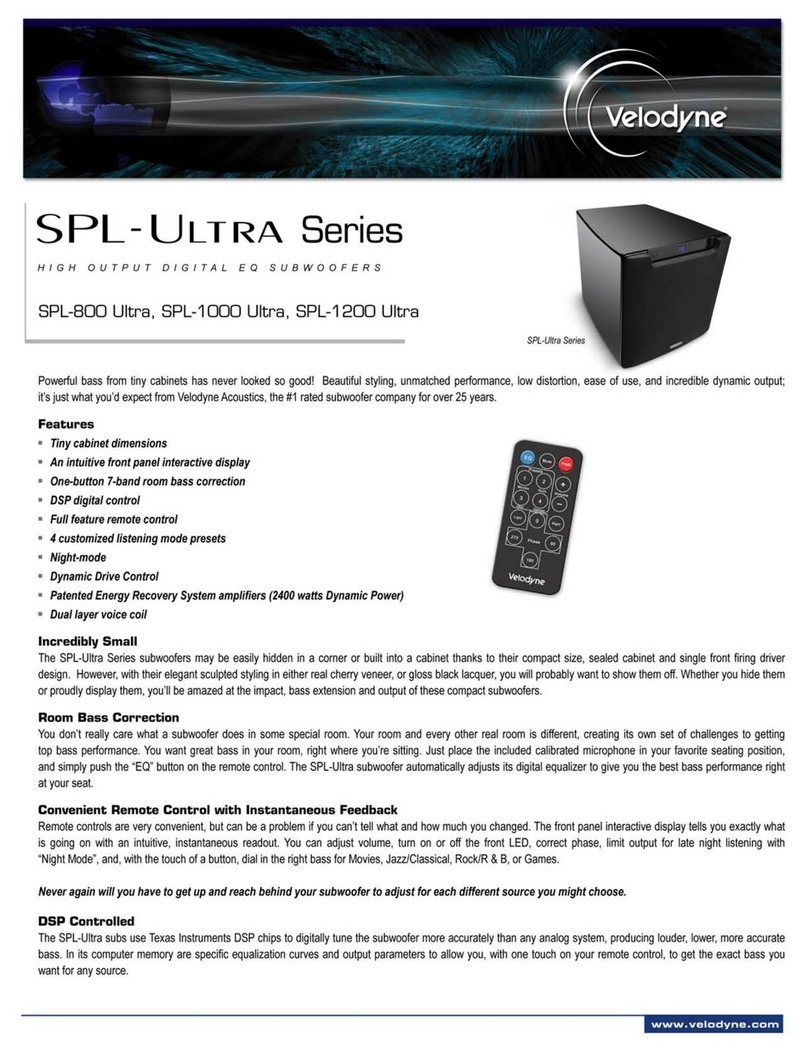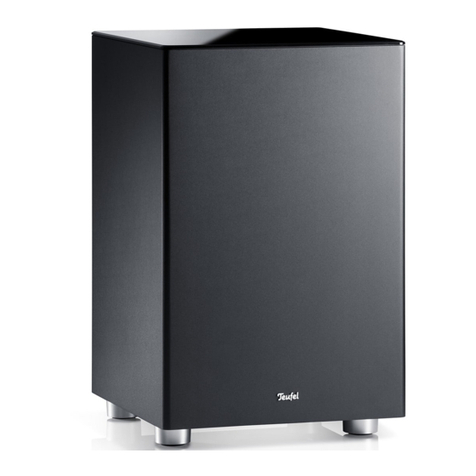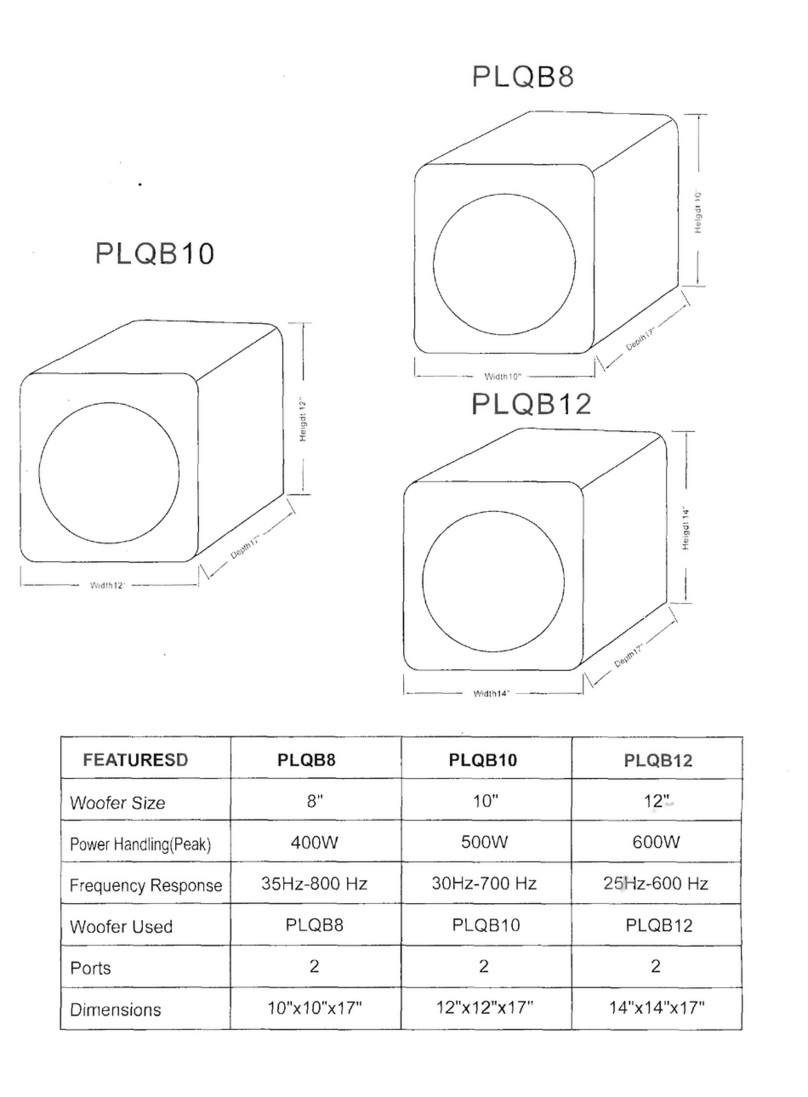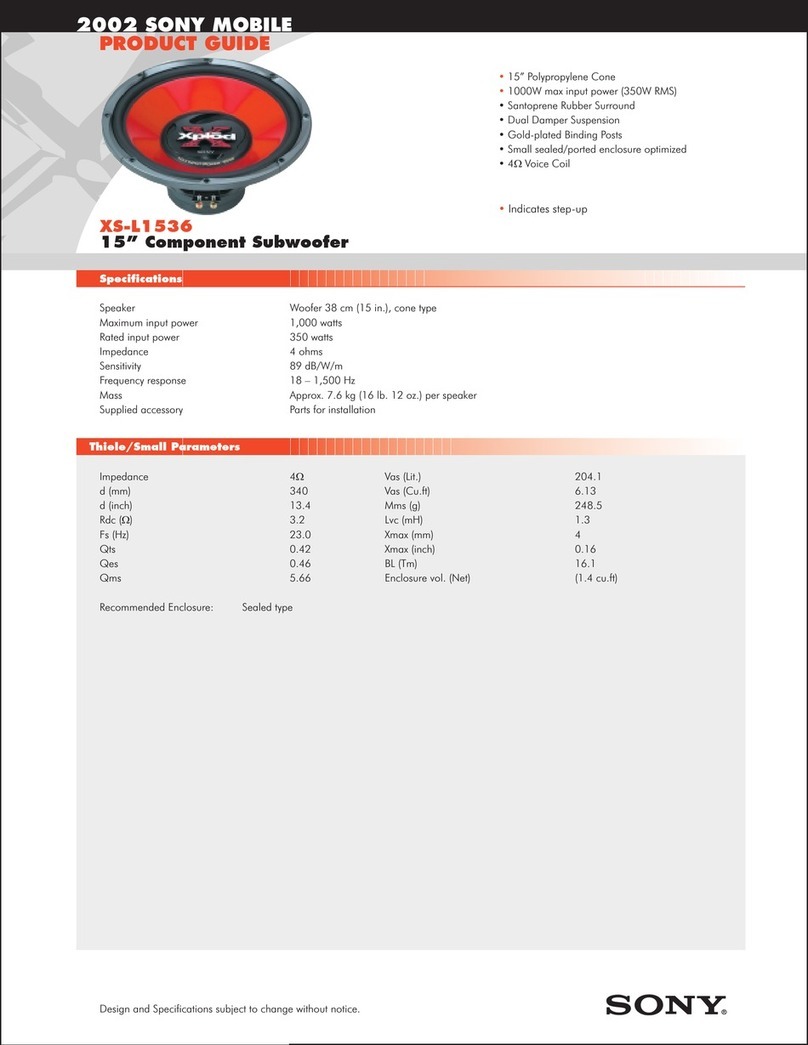2
Thank you for buying a REL Serie T Sub-Bass System. The Serie T is the result of a state-of-the-art collaboraon
between our American design and engineering team and our Brish producon team.
Serie T is conceived as the most cost effecve high end product we know how to build. We have spared
none of the materials and finishing techniques our larger designs are noted for. Many compeng products
are clearly the result of cost engineering, however, Serie T is a pure high end product in design and execuon.
If, like many, you are surprised and delighted by the quality and “suddenness” of bass as rendered by Serie T,
know that this is the result of a careful, painstaking iterave process of the sort that so rarely makes it into
producon at anything like these prices.
Many of the sonic virtues – speed, warmth and slam – embodied in Serie T are the direct result of
mechanical and acousc advancements. In parcular, we have ulized damping and resonance control
approaches more familiar to fine acousc instrument manufacturers incorporang bracing that is highly
unusual in this applicaon. The bracing is carefully wedged into shallow channels in the side and top wall
material which beer couples the energy control of these panels. Addionally, the aluminium feet are
milled from solid billet and weigh an incredible amount. We thoroughly tested and were able to clearly
discern the benefit of having a solid, high mass exit path for deleterious vibraon; vibraon that would
otherwise slow and blur the clarity of bass lines. Make a structure inert and quieter and more of the
music emerges.
A brief word about the styling, fit, and finish. Each Serie T receives nine coats of lacquer, all of which require
hand sanding. The final coat is then turned by hand on a large, industrial rouging wheel using jewelry buffing
compound. Finally, the deep, wet gloss is achieved by hand polishing using micro fibre cloth and expensive
aermarket waxes. All exposed bolts used to aach the rear panel to the Serie T cabinet are polished T-304
stainless steel allen head designs. This extra cost is undergone to ensure that even in humid markets RELs
will not oxidize or degrade in appearance. Each badge is milled from solid billet aluminium and is a full
2.5mm thick even though we choose to only reveal 1mm above the surface of the cabinet. Much like the
underlying quality of all RELs, more lies beneath the surface than is evident to the eye.
Welcome to the REL Fam ly
